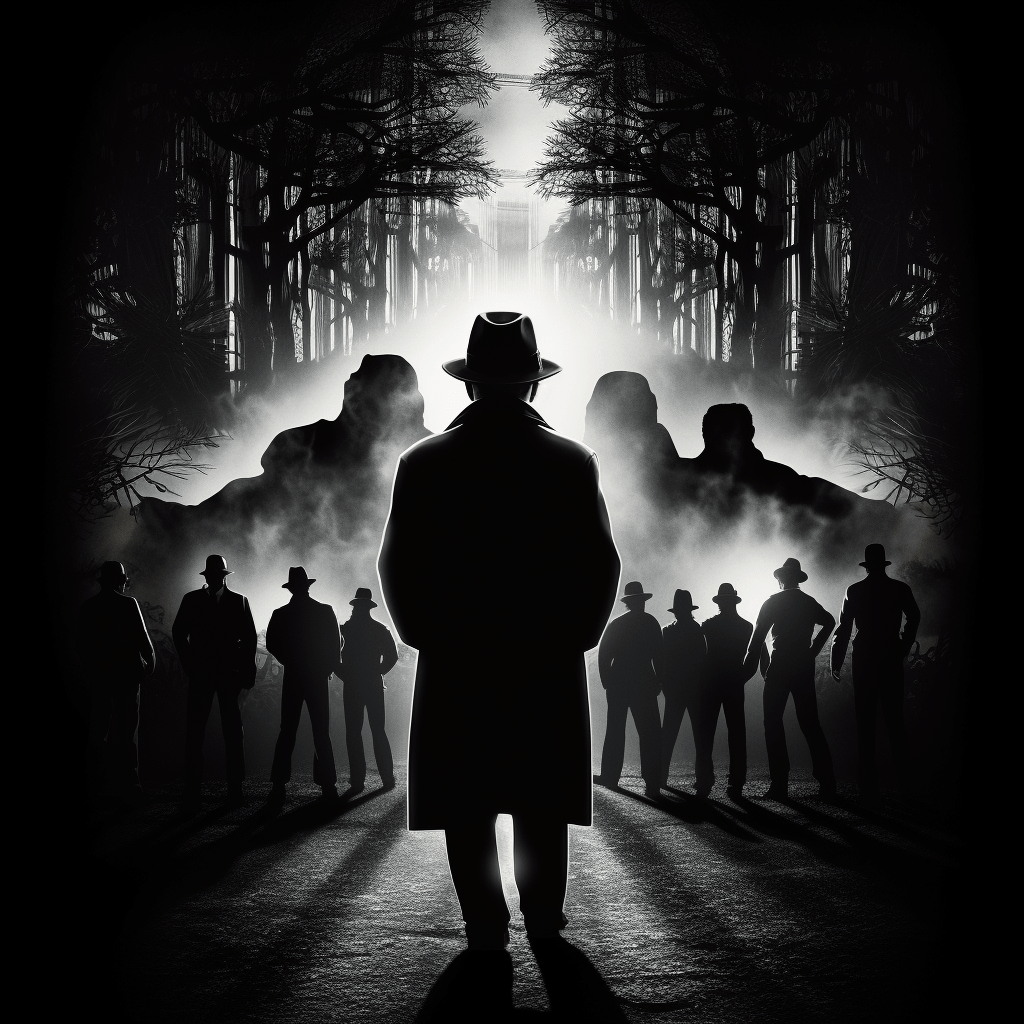Schindler's List 1993

In 1939, businessman Oskar Schindler arrives in Krakow, driven by profit and opportunism. As war looms, he joins the Nazi party for strategic reasons. Initially, he hires Jewish workers to fuel his factory's success. However, when the SS begins ruthless exterminations, Schindler finds himself inadvertently saving innocent lives alongside his own interests, setting him on a path of moral awakening amidst the horrors of World War II.
Does Schindler's List have end credit scenes?
No!
Schindler's List does not have end credit scenes.
Actors
Meet the cast of Schindler's List and learn about the talented actors who brought the characters to life. Explore their roles and career highlights.
Links
Explore where to watch Schindler's List online. Find reviews, ratings, and detailed movie information on other platforms like Metacritic, Rotten Tomatoes, IMDb or Media Stinger
Ratings
Discover how Schindler's List is rated on popular platforms like IMDb, Metacritic, and TMDb. Explore audience and critic scores to see how this movie ranks among the best.

95
Metascore
9.2
User Score


%
TOMATOMETER

0%
User Score

9.0 /10
IMDb Rating

86
%
User Score
Movie Quiz
Challenge your knowledge of Schindler's List with an engaging quiz. Test your memory of the movie’s characters, plot twists, and unforgettable moments.
Schindler's List Quiz: Test your knowledge on the historical events and characters depicted in Schindler's List.
Who is the main character in Schindler's List?
Awards
Discover the awards and nominations received by Schindler's List. Explore the history of Schindler's List and its cast and crew.


Art Direction
Cinematography
Costume Design

Film Editing
Makeup
Music (Original Score)
Best Picture
Sound
Writing (Screenplay Based on Material Previously Produced or Published)
Best Film

Best Actor in a Leading Role
Best Actor in a Supporting Role
Best Actor in a Supporting Role
Best Costume Design
Best Editing
Best Makeup and Hair

Best Production Design
Best Sound

Best Motion Picture – Drama


Best Supporting Performance in a Motion Picture – Drama, Musical or Comedy (Supporting Actor)
Ralph Fiennes

Plot Summary
Get the full story of Schindler's List with a detailed plot summary. Dive into its themes, characters, and the twists that make it a must-watch.
The relocation of Polish Jews to Krakow initiates in late 1939, shortly after World War II erupts when the German Army swiftly defeats the Polish forces. Oskar Schindler (Liam Neeson), an ambitious businessman hailing from Czechoslovakia, seizes the opportunity to exploit the plentiful and inexpensive Jewish labor for his enamelware production aimed at supplying the German military. Initially a self-serving member of the Nazi party, Schindler uses his cunning and charm to bribe army and SS officials overseeing procurement.
With military backing, Schindler establishes a factory to produce army mess kits and cooking utensils. Despite his lack of experience in factory management, he enlists the help of Itzhak Stern ([Ben Kingsley]), a Jewish accountant from the local Judenrat (Jewish Council), who possesses vital connections within the underground Jewish business community. In exchange for a share of the factory’s products for black market trade, the Jewish community loans him needed funds. As Schindler’s business flourishes, thanks to his new role as “Herr Direktor,” Stern takes charge of administrative tasks.
Stern astutely advises Schindler to employ Jews instead of Poles for cost efficiency, with their wages funneled directly to the Reich. Schindler’s factory workers are granted passes to leave the ghetto, and through Stern’s forged documents, a significant number are identified as “essential” in the eyes of the Nazi bureaucracy—saving them from deportation to concentration camps, or worse.
The entrance of Amon Göth (Ralph Fiennes) into Krakow marks a grim shift as he assembles a nearby labor camp in Paszów. The brutal liquidation of the Krakow ghetto follows, as SS troops sweep through and mercilessly execute anyone who resists or even appears weak. Watching the tragic events from a distance, Schindler finds himself deeply shaken yet strategically befriends Göth to ensure his continued protection.
As the labor camp is constructed, Schindler uses bribery tactics on Göth to create a sub-camp for his workers, intending to shield them from the guards’ cruelty. However, an order from Berlin arrives mandating Göth to dispose of the corpses from the Krakow ghetto, dismantle Paszów, and transport the remaining Jews to Auschwitz. Schindler manages to persuade Göth to let him retain “his” workers and relocate them to his former factory in Zwittau-Brinnlitz, Moravia—safeguarding them from the Nazis’ genocidal agenda.
The crucial “Schindler’s List” outlines workers essential for the factory’s operation, offering them a lifeline between life and death. Schindler also engages in a risky game of high card draw with Göth for the life of Helen Hirsch, a housekeeper subjected to Göth’s relentless abuses. He ultimately secures Helen’s place on the train bound for Brinnlitz.
While all men on the list arrive safely at their new home, tragedy strikes for the women and children, misdirected to Auschwitz, where they endure the horrors of a gas chamber scare. Schindler, desperate to save them, swiftly makes his way to Auschwitz and manages to bribe the camp commander, Rudolf Höss (Hans-Michael Rehberg), with diamonds to ensure their release, navigating multiple obstacles—including SS officers trying to prevent children from boarding the rescue train.
Upon reaching Zwittau-Brinnlitz, Schindler implements strict rules; guards are prohibited from executing or abusing workers, and he honors the Jewish Sabbath. Throughout this harrowing journey, Schindler spends a significant portion of his riches bribing Nazi officials for better treatment of the Jews. A poignant moment arises when he surprises his wife at church, revealing that she is his only true love, despite his previous infidelities. But as the war comes to a close, Schindler’s fortune dwindles just as the German army surrenders.
Branded a Nazi and a “profiteer of slave labor,” Schindler must flee the advancing Soviet Red Army. He bids an emotional farewell to his workers, who present him with a heartfelt letter declaring him a hero and a ring engraved with the Talmudic phrase, > “He who saves the life of one man, saves the world entire.” Deeply moved yet burdened by regret over not doing more, Schindler leaves under the guise of a refugee.
The next morning, the freed Schindler Jews wake to find liberation at the hands of the Red Army. As they venture into a nearby town seeking food, a title card reveals Schindler’s recognition as a “righteous person” by the Yad Vashem in Jerusalem and mentions the enduring tree he planted there.
The fate of Göth is shared as he is captured, defiantly claiming allegiance to Hitler until he is hanged for his crimes. The film concludes with a poignant scene of Schindler’s surviving workers visiting his grave in modern-day Israel, where they lay stones in remembrance. The present-day moment serves as a powerful testament to the lives saved—over 6,000 descendants stemming from the approximate 1,100 Jews he sheltered. In the closing shot, Neeson himself silently lays roses on Schindler’s grave, reflecting contemplatively on the legacy of courage and compassion that endures.
Videos
See the latest videos related to Schindler's List. Explore trailers, interviews, and behind-the-scenes content that give you a deeper look into the film.
Keywords
Discover the keywords that describe the themes and topics of the movie. Explore the keywords that define the essence of the film.
Related Articles
Stay updated on Schindler's List with insightful articles, reviews, and explainers. Unpack the movie’s deeper meanings, themes, and ending.
Featured on this page

What's After the Movie?
Not sure whether to stay after the credits? Find out!
Check out our other apps:
Actors
Companies
Latest Movies
© 2025 What's After the Movie. All rights reserved.
































